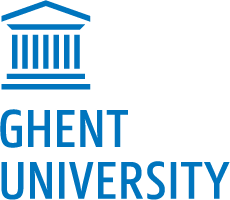
UGent: Conformal Coating of Nanomaterials (COCOON)
University of Ghent, Faculty of Sciences, Department of Solid State Science
General expertise of the research group
The research group COCOON is part of the Department of Solid State Sciences and is led by Christophe Detavernier and Jolien Dendooven. Our research is directed at developing and understanding thin film materials within a context of applications relevant to society. We develop thin films and nanomaterials and
systematically study their properties governed by their composition, structure, and surface and interface nature. We are particularly interested in (1) physical phenomena that occur at surfaces and interfaces during thin film growth or electrochemical energy conversion reactions, (2) solid state reactions that occur at the nanoscale, and (3) ion transport in solid state nanoscale systems. Understanding these fundamental aspects provides the necessary foundation for optimizing deposition processes and developing materials with an improved functionality for the targeted applications. Important research topics include:
- Atomic layer deposition for ultrathin coatings, surface engineering and conformal coating of nanostructured materials
- In-situ characterization of thin films during deposition/annealing treatments
- Combinatorial thin film research for fast screening of composition-dependent properties of binary, ternary or even quaternary mixtures
Specific hydrogen- related expertise & research topics
The COCOON group has a strong track record in investigating thin film materials for applications in microelectronics and battery technology. Since several years, the group is expanding its expertise in thin film technology to applications in electrocatalysis:
- Atomic layer deposition (ALD) of electrocatalysts for hydrogen and oxygen evolution reactions: metal nanoparticles, oxides, phosphates and sulphides with controllable composition and dimensions
- ALD for tailoring electrochemical interfaces, e.g. passivation layers for photoelectrodes, stabilizing layers to prevent metal nanoparticle catalyst degradation, thin films of mixed ionic electronic conductors
- Combinatorial magnetron sputtering of alloy thin film libraries for catalyst composition screening
Available equipment/tools:
- Thermal and plasma-enhanced ALD systems with several integrated in-situ characterization techniques to monitor surface reactions and film deposition during ALD processes
- Dedicated setups for the sputter deposition of combinatorial thin film libraries; wafers can be coated with a film that has a uniform thickness and a linear gradient in composition, resulting in a “printed” compositional library of binary, ternary or even quaternary mixtures; in this way, one can easily investigate the properties of >100 different compositions in parallel
- Several home-built systems for in situ XRD during annealing under controlled ambient (oxidizing, inert, reducing) offering opportunities to efficiently study the evolution of phase, grain size and phenomena such as crystallization and phase transformations during annealing
- An integrated glovebox infrastructure for thin film deposition onto air-sensitive materials, and for surface and electrochemical characterization, all without exposure to air. All gloveboxes are Ar-filled; several commercial and home-built potentiostat/galvanostat devices are available
- UHV cluster tool consisting of an ALD tool, a scanning probe microscope, an instrument for XPS and a vacuum transfer line, which allows for transferring samples between glovebox, deposition and analytical chambers without air exposure
Participating in FL/B/EU funded projects with H2 related research:
- SYN-CAT (SBO, VLAIO-MOT, UA, UHasselt, Imec, UGent, VUB): Synergetic design of catalytic materials for integrated photo- and electrochemical CO2 conversion processes
- TEMPEL (SBO, VLAIO-MOT, VITO, imec, UGent, KULeuven, UA): Temperature assisted water electrolysis
- ALTERPEM (SBO, VLAIO-MOT, KUL, imec, UGent): Alternative for PEM technology with nonfluorinated, integrated membranes and PGM-free nanoarchitecture
Main relevant publications
- Blomme, R.; Ramesh, R.; Henderick, L.; Minjauw, M.; Vereecken, P.; Adriaens, M.; Dendooven, J. Atomic layer deposition for tuning the surface chemical composition of nickel iron phosphates for oxygen evolution reaction in alkaline electrolyzers, IOP Nanotechnology 35 (23), 235401 (2024).
- Mathew, F.; Van den Hoek, J.; Poonkottil, N.; Zhao, B.; Rampelberg, G.; Choukroun, D.; Hereijgers, J.; Hens, Z.; Poelman, D.; Breugelmans, T.; Detavernier, C.; Dendooven, J. Crystalline Tin Disulfide by Low-Temperature Plasma-Enhanced Atomic Layer Deposition as an Electrode Material for Li-Ion Batteries and CO2 Electroreduction, ACS Applied Energy Materials 6 (24), 12526-12538 (2023).
- Henderick, L.; Dhara, A.; Werbrouck, A.; Dendooven, J.; Detavernier, C. Atomic layer deposition of metal phosphates, Applied Physics Reviews 9, 011310 (2022).
- Trompoukis, C.; Feng, J.-Y.; Bosserez, T.; Rongé, J.; Dendooven, J.; Detavernier, C.; Baets, R.; Martens, J. A. ALD Pt nanoparticles and thin-film coatings enhancing the stability and performance of silicon photocathodes for solar water splitting, Sustainable Energy Fuels 5, 3115-3123 (2021).
- Rongé, J.; Dobbelaere, T.; Henderick, L.; Minjauw, M. M.; Sree, S. P.; Dendooven, J.; Martens, J. A.; Detavernier, C. Bifunctional earth-abundant phosphate/phosphide catalysts prepared via atomic layer deposition for electrocatalytic water splitting, Nanoscale Advances 1, 4166 – 4172 (2019).
- Dendooven, J.; Ramachandran, R. K.; Solano, E.; Kurttepeli, M.; Geerts, L.; Heremans, G.; Minjauw, M. M.; Dobbelaere, T.; Devloo-Casier, K.; Martens, J. A.; Vantomme, A.; Bals, S.; Portale, G.; Coati, A.; Detavernier, C. Independent tuning of size and coverage of supported Pt nanoparticles using atomic
layer deposition, Nature Communications 8, 1074 (2017). - Mattelaer, F.; Bosserez, T.; Rongé, J.; Martens, J. A.; Dendooven, J.; Detavernier, C. Manganese oxide films with controlled oxidation state for water splitting devices through a combination of atomic layer deposition and post-deposition annealing, RSC Advances 6, 98337-98343 (2016).
- Rongé, J.; Deng, D.; Sree, S. P.; Bosserez, T.; Verbruggen, S. W.; Singh, N. K.; Dendooven, J.; Roeffaers, M. B. J.; Taulelle, F.; De Volder, M.; Detavernier, C.; Martens, J. A., Air-based photoelectrochemical cell capturing water molecules from ambient air for hydrogen production, RSC Advances 4 (55),
29286-29290 (2014). - Blomme, R.; Ramesh, R.; Henderick, L.; Minjauw, M.; Vereecken, P.; Adriaens, M.; … Dendooven, J. Atomic layer deposition for tuning the surface chemical composition of nickel iron phosphates for oxygen evolution reaction in alkaline electrolyzers, IOP Nanotechnology 35 (23), 235401 (2024).
Contact persons
Prof. Christophe Detavernier
Professor Chemistry
+32 9 264 43 42
christophe.detavernier@ugent.be
Prof. Jolien Dendooven
Professor Chemistry
jolien.dendooven@ugent.be
University of Ghent • Department of Solid State Science
9000 Gent
Belgium

